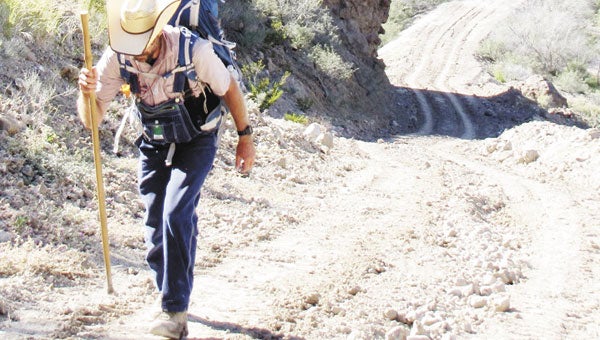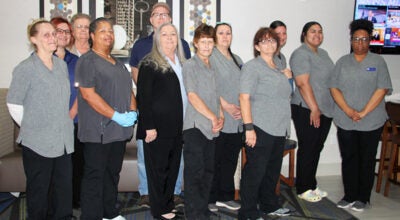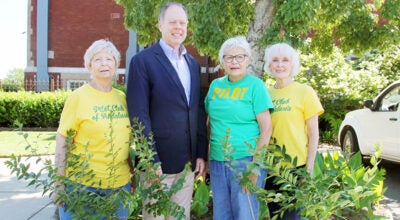Hainds shares tales of Tex-Mex border walk
Published 12:00 am Thursday, September 3, 2015
The local researcher who embarked on a nearly 1,200-mile journey along the Mexico-Texas border last year spoke to the Andalusia Lions Club about his adventures.
Mark Hainds, who is the new forestry instructor at LBWCC, but spent years working as a research associate at the Solon Dixon Forestry Center and as a research coordinator for the Longleaf Alliance, walked from El Paso, Texas, at the International Mile Marker No. 1 to the Gulf of Mexico.
The Star-News reported about his early adventures last November, but Hainds gave an up-to-date testimony of his adventures on Wednesday and said he recently turned in a manuscript to the University of Alabama Press for review.
Hainds set out Oct. 27, and finished Dec. 21.
His journey was filmed by Rex Jones and the Southern Documentary Project and will air on PBS around the beginning of 2016.
Throughout his journey, Hainds had a group called the Tex-Mex comrades, who were people from all across the South who helped him with meals and other things.
He camped out or stayed in hotels during his journey.
“There wasn’t an established trail,” he said.
He said his walk was dangerous, especially jumping walls near the Cesar Chavez.
“I had the greatest misunderstanding,” he said. “Here, I think that rural areas are safe and urban areas aren’t, but it wasn’t like that out there. El Paso was one of the cleanest and safest spots, but the rural areas weren’t.”
Hainds spoke about traveling down roads such as Old Mines Road, a legendary road near the border that drug smugglers use.
He traveled through areas such as the Chihuahuan Desert.
He said he interacted with every branch of law enforcement, especially the border patrol.
Hainds said he often saw border patrol use horse trailers, four-wheelers, air boats, etc., to search for illegals.
He said that the border patrol agents didn’t communicate well between sectors and he wound up being questioned a lot.
Then there was sheriff’s deputies and highway patrol officers who also questioned him.
Hainds said the movie “No Country for Old Men” inspired him to take the journey.
The walk was harsh and his feet told the story.
“I would ice down my leg and tape my toes,” he said. “But we kept going. It was tough.”
Hainds shared that several border towns have essentially died since Sept. 11, 2001.
“We are murdering communities that were dependent upon each other,” he said.
Hainds said prior to the terrorist attacks, people would cross the American border to use telephones and cross the Mexican border to buy groceries.





